Table of Contents
Product Manual
This standard operating procedure (SOP) describes the materials and processes necessary to unpack, install, operate, and maintain a Jet-Fueler semi-automatic filling system, for hardware version 2.0 (minor revisions also supported).
Materials
- Box cutter or scissors
- Wire cutters
- Work table at least 72”x36” and capable of supporting 150 pounds or 68kg
- Category 5 Ethernet cable (optional: for software updates)
- Computer with Local Area Network and internet access (optional: Windows, MacOS, Android, Chrome, iOS compatible)
- Nitrogen bottle, food-grade or better, type CGA-580 thread, with safety chains
- Screwdriver or tri-clamp torque tool
- Adjustable wrench
- 9/16” open ended wrench
- 10mm open ended wrench
- 2.5mm hexagonal driver
- Needle nose pliers
- Paper or terry cloth towel
- Kimwipes or lint-free wipe
- 99% Isopropyl alcohol (190 proof ethanol sufficient for reclamation only)
- Ultrasonic bath
- Alconox Powdered Precision Cleaner
Unboxing & Installation
Congratulations on purchasing a new Jet-Fueler! Begin by preparing the area in the manufacturing facility where Jet-Fueler is to be installed. Per the materials list, the table should be sturdy, take additional care to ensure it is level. The table should additionally be fitted with pressurized cylinder safety chains for the nitrogen supply.
Ensure the table is located within 5’/1.5m from an electrical outlet (110v AC, single phase). The table should preferably be located near an RJ-45 jack, or have a Cat. 5 Ethernet cable routed directly to it from the nearest LAN switch in the facility. The Jet-Fueler will require internet access in order to take advantage of remote service and support.
NOTE: Scheduling a remote installation and training session with a Jet-Fueler support engineer prior to unboxing is highly recommended. Please call 971-606-3420 or email [email protected] to set up an appointment.
Unboxing Checklist
- 1x Jet-Fueler Semi-Automatic Cartridge Filler
- 1x Jet-Fueler Reservoir
- 1x Jet-Fueler Reservoir Holder
- 1x Jet-Fueler Foot Pedal
- 2x Jet-Fueler Beaker
- 1x Nitrogen Gas Regulator
- 1x PTFE tube ¼”ODx1/8”IDx36” long
- 1x AC power cord
- 1x Luer-lock blunt-tip needle, 16AWG
Materials
- Box cutter or scissors
- Flat-head screw driver or pliers
- Work table at least 36”x36” and capable of supporting 150 pounds or 68kg
- Category 5 Ethernet cable
- Computer with Local Area Network and internet access (Windows, MacOS, Android, Chrome, iOS compatible)
- Nitrogen bottle, food-grade or better, type CGA-580 thread, with safety chains
- Adjustable wrench
- 9/16” open ended wrench
Procedure
- Take note of the condition of the ShockWatch sticker applied to the crate, take a picture if it is red and notify Vape-Jet Support.
- Open the crate by unbending the metal tabs on the lid with flat-head screw driver or pliers, then unbend the tabs holding the walls in place. Remove packing material to expose the Jet-Fueler and the component box.
- Locate the Final Verification and Packing Checklist and use it to confirm all items are present.
- Unbox and set aside the reservoir, foot pedal, and regulator boxes, being careful to not break the beakers packed in the regulator box. Remove all blue tape from the reservoir.
- Turn the black knob on the regulator counterclockwise until it stops, this is the “closed” position. Attach the regulator to the nitrogen bottle, secure using the adjustable wrench. Remove the sealing tape and attach the PTFE tube to the output of the push connector on the regulator.
- Place the Jet-Fueler on the work table and remove external tape which seals the door.
- Secure the nitrogen bottle and regulator in an upright position with chains to the leg of the workbench, wall anchor, or other safe position in a well ventilated area.
- Connect the facility Ethernet cable to the RJ-45 port on the rear of the Jet-Fueler to receive software updates, if available.
- Install the needle into the Luerlock adapter on the needle holder of the Jet-Fueler, screwing it in tightly with pliers. Place the Jet-Fueler beaker below the needle.
- Install the Reservoir Holder onto the top of the Jet-Fueler by removing the four (4) hexagonal socket screws protruding from the right/front corner of the top of the Jet-Fueler with a 2.5mm hexagonal driver.
- Insert the screws through the corresponding holes in the base of the Reservoir Holder, with the small slot facing the rear of the machine, and the large slot facing the operator, secure the Reservoir Holder to the top of the Jet-Fueler by tightening the four hexagonal socket screws.
- Locate the product PTFE line (semi-clear, at the bottom of the bowl reducer) and remove the tape from the threaded adapter. Place the Reservoir in its holder such that the electrical power and temperature wires go through the vertical slot on the rear of the holder. Insert the threaded adapter into the top port of the valve inside the chamber, hand tighten the nut, and then secure with ¼ turn using the 10mm open ended wrench. Insert the Reservoir power plug into the receptacle located behind Reservoir Holder base on top of the machine, and secure the connection by screwing the lock nut hand tight.
- Plug the Foot Pedal into the USB jack on the rear of the Jet-Fueler.
- Join the previously scheduled installation and training meeting via the Microsoft Teams link provided in the calendar invite, or call a support engineer prior to powering the unit for the first time.
- Once unboxing and setup has been confirmed with Jet-Fueler support, the power cord may be plugged into the back of the unit, connected to the facility mains, and the unit switched on from the rear panel.
- The Jet-Fueler will then power on with several fans and the touch screen becoming active.
Product Loading Procedure
This procedure will be performed prior to dispense calibration and filling operations. Perform after the Cleaning Procedure to maintain product specificity.
Required Materials
- 9/16″ open ended wrench
- Formulated product, up to 1200ml per batch
- Stir rod
- Silicone scrapers
- Jet-Fueler beaker
Procedure
- Begin with a clean Reservoir, it should remain in place in its holder while loading. WARNING: NEVER DISCONNECT THE RESERVOIR ELECTRICAL CONNECTION WHILE THE HEATER POWER IS ON.
- With the top clamp, Viton seal, and bulkhead removed, carefully transfer your prepared and pre-heated product formulation into the reservoir making sure the Viton gasket area remains clean. Utilize a stir rod and/or silicone scrapers to facilitate transfer from your formulation container to the Reservoir.
- Replace the Viton seal, bulkhead, and top clamp. Ensure the clamp is secured tightly to avoid leaks under pressure.
- Ensure the Reservoir product line is properly connected to the valve in the Jet-Fueler chamber before proceeding. Ensure the black knob on the nitrogen regulator is in the “closed’ position (turn counterclockwise until it stops).
- Connect the nitrogen port of the Reservoir bulkhead to the corresponding quick-connector (barrel style with black PTFE tubing) on the output of the nitrogen regulator.
- Ensure the Reservoir power and temperature wires are connected to the Jet-Fueler, the black barrel connector only fits one way, and the locking ring should be tight. The temperature will display “-15C” on the Operation screen of the Jet-Fueler if it is disconnected.
- With the nitrogen regulator valve “closed”, open the primary valve (gray knob, counterclockwise) on the nitrogen bottle, inspect the right-hand dial to ensure the bottle has pressure, inspect regulator for leaks.
- Hold a cloth or paper towels underneath the Reservoir, and slowly open the regulator (black knob, clockwise) to pressurize the Reservoir to about 40psi. If any leak occurs immediately disconnect the Reservoir from the nitrogen supply by pulling the quick-connector, clean any leaked product, re-tighten the clamp, reconnect nitrogen, and repeat pressurization.
- NOTE: Operating pressure is typically between 20psi and 60psi, depending on product viscosity and operating temperatures. The dispensing valve is maximally rated for 100psi, though it is not recommended to exceed 60psi.
- From the Operation screen, turn on each of the three heaters by clicking the “toggle” button underneath the each temperature readout dial. If the system is totally cold, allow at least 30 minutes to heat completely before proceeding.
- With the Jet-Fueler beaker below the needle, click the “Bypass” button underneath the pump position display. This will allow product to flow through the product line using only nitrogen pressure; click it again to stop flow as soon as product is steadily flowing into the beaker without bubbles.
- The oil line is now primed and the Jet-Fueler is ready to proceed with the Pump Dispense Calibration Wizard.
Pump Dispense Calibration
The Pump Dispense Calibration Wizard must be completed as a part of the Calibration Procedure before filling any batch, this ensures that dispensing is accurate despite product viscosity variance.
Required Materials
- Calibrated digital balance, 0.01g x 100g minimum accuracy and capacity
- Clean Jet-Fueler beaker
- 99% isopropyl alcohol (190 proof ethanol sufficient for reclamation only)
- Kimwipes or similar low-lint wipe
Procedure
- Click “Calibration” on the upper right of the Jet-Fueler interface to launch the Wizard.
- “Set Prime Position” determines the first guess of the syringe position required to dispense the desired mass of product.
- Slider position 0 corresponds to the syringe fully depressed, containing no product.
- Slider position 3000 corresponds to the syringe fully extended, containing 5ml of product.
- Pure THC distillate is slightly less than 1g/ml in density, with terpenes further reducing product density.
- Therefore a good rule of thumb is as follows:
- 1.0g cartridges will have slider position of approximately 600 (i.e. 3000 / 5ml / 1g/ml = 600 position/g).
- 0.5g cartridges will have slider position of approximately 300.
- 0.3g cartridges will have slider position of approximately 200.
- Select the appropriate Prime Position and click “Next”.
- “Cycle Pump” determines the “Pump Charging Delay” and “Pump Dispensing Delay” times in milliseconds (1000 milliseconds per 1 second).
- “Pump Charging Delay” is the length of time that elapses between the syringe moving to the Prime Position, and the product fully filling the specified volume of syringe.
- This value is typically between 500ms and 2500ms depending on product viscosity, dispensing volume, system temperatures, and operating pressure.
- “Pump Dispensing Delay” is the length of time to wait after dispensing to begin the next dispense cycle.
- This value is typically between 100ms and 500ms and is used to mitigate dripping product anywhere but inside a cartridge, pod, or capsule.
- Select long delays for both parameters for the initial dispense.
- Turn on the calibrated balance (scale), and tare the Jet-Fueler beaker.
- Click “Cycle Pump” from the Wizard to dispense the initial guess quantity of product.
- Place the Beaker on the tared scale to readout the mass of product dispensed.
- NOTE: pay close attention to the syringe as the “Cycle Pump” routine runs, note whether the “Pump Charge Delay” and “Pump Dispense Delay” times need adjusting. E.g. If there are lots of bubbles present in the syringe when the plunger begins to move back to 0 position, then the “Pump Charge Delay” needs to be increased; if the syringe fills completely with product then waits a time before moving back to 0 position, then the “Pump Charge Delay” is too long and needs to be decreased. Similarly with “Pump Dispense Delay”, too long a delay will be unnecessary, and too short may allow product to drip outside a cartridge.
- Record the mass dispensed and click “Next”.
- Enter the “Desired Weight in Grams” in the field, using a leading 0 for less than 1 gram cartridges, e.g. 0.5 for 500mg, or 0.3 for 300mg, etc. This value can be set to dispense precisely any value between a single drop up to 5.0g.
- Enter the “Measured Weight in Grams” from the scale, and click “Next”. The routine will recalculate the Prime Position to be nearer the Desired Weight.
- Re-tare the beaker and place it back under the needle. Click “Cycle Pump” from the “Verify & Save” portion of the Wizard, weigh it again to confirm the new Prime Position is accurate.
- Click “Finish” to save the Pump Calibration.
Dispense Operations
Once the dispense has been calibrated, click on the “Vape-Jet” icon in the upper right corner of the GUI to load the Operations Controls. This screen will display controls for the heaters and pump. The system should be preheated and pressurized from the Dispense Calibration procedure, if not, let the system warm up for 20-30 minutes before proceeding.
To dispense, hold the container to be filled (vape cartridge, capsule, bottle, etc.) such that the needle is inside the container, then depress the foot pedal (or click “dispense” from the GUI) to dispense the calibrated amount of fluid into the container. When the pump has dispensed it will automatically recharge the syringe for the next container.
Proceed with dispensing into empty containers until the reservoir is empty, the cycle counter will provide an indication as to when the reservoir is approaching empty. If bubbles are being dispensed along with liquid, then the reservoir is empty. Once filling can no longer occur, proceed with loading more product into the reservoir, or proceed with the Clean In Place Standard Operating Procedure located under the “Clean” Wizard at the top of the screen.
ALWAYS PERFORM THE CLEAN IN PLACE PROCEDURE BEFORE CONCLUDING FILLING OPERATIONS.
TURN ALL HEATERS OFF WHEN NOT IN USE.
Deep Clean Procedure
This standard operating procedure (SOP) describes the materials and processes necessary to thoroughly clean each component of the oil path of the Jet-Fueler filling system. This SOP is to be performed if the filling system will be idle for an extended period, or after 240 hours of operation as preventative maintenance.
Materials
- Screwdriver or tri-clamp torque tool
- 9/16” open ended wrench
- 10mm open ended wrench
- 2.5mm hexagonal driver
- Needle nose pliers
- Paper or terry cloth towel
- Kimwipes or lint-free wipe
- 99% Isopropyl alcohol
- Ultrasonic bath (optional)
- Alconox Powdered Precision Cleaner (optional)
Procedure
The following describes cleaning of each part of the oil path of the filling system. After powering the machine on, ensure all heaters are off by clicking “Toggle” on each heater from the Operations Screen.
Deep cleaning:
- Start with a clean and empty Reservoir from the Clean-in-Place SOP; disconnect the nitrogen quick-connector and power/temperature connector.
- Use a 2.5mm hexagonal driver to remove the two (2) M3x25mm screws which secure the syringe clamp, remove the clamp and set aside with its screws. Then remove the two (2) M3x12mm screws which secure the valve to the pump housing, set those screws aside.
- Using thumb and forefinger, loosen the syringe plunger thumb screw at the left side of the syringe until it is dangling (it is captive in the pump slider and cannot be removed).
- From the “Advanced” screen, click “Charge” under the pump section to move the pump slider back, this will allow you to remove the syringe and valve from the pump by pulling straight out towards the operator. NOTE THE ORIENTATION OF THE SYRINGE PLUNGER KEY AND VALVE SELECTOR KEY FOR REASSEMBLY, BOTH MUST BE ALIGNED TO FIT INTO THEIR RESPECTIVE SLOTS.
- Disconnect the syringe from the valve body by rotating counterclockwise (when viewed from the plunger end of the syringe). Carefully pull the plunger out of the syringe body, and place both pieces into a beaker of 99% isopropyl alcohol.
- Using the 10mm open ended wrench, loosen the threaded stainless steel barb adapters and remove both PTFE lines from the valve body. Place the valve body into the beaker with the syringe body, syringe plunger, and 99% isopropyl alcohol.
- Wipe the stainless steel barbed insert and compression fittings on the PTFE with a Kimwipe and alcohol.
- Remove the reservoir from its holder. Loosen the tri-clamp with a torque tool or screwdriver, remove the clamp, bulkhead, and seal to access the inside. Clean all internal parts with Kimwipes and alcohol.
- Disconnect the compression fitting on the bottom of the bowl reducer with a 9/16” open ended wrench, and place it in the beaker with the syringe parts, valve, and isopropyl alcohol.
- Using the needle nose pliers, carefully loosen and remove the needle from the Luer Loc heat block by turning the base counterclockwise, if looking up from the end of the needle. Place the needle in the beaker with the valve and syringe.
- Using the 2mm hexagonal driver, carefully loosen the three (3) screws that hold the heat block together, and set aside the screws and top plate of the heat block.
- Remove the PTFE assembly that connects the needle to the valve, and place it in the beaker with the other components to soak in alcohol.
- If no ultrasonic bath is available, let these components soak for at least 24 hours, occasionally rotating the valve port selector 360 degrees at a time; THE PORT SELECTOR MUST BE ORIENTED TO FIT IN THE SLOT IN THE PUMP HOUSING IN ORDER TO REINSTALL IT PROPERLY.
- If an ultrasonic bath is available, place the top bulkhead, Viton gasket, valve, syringe, needle, and Luer Loc components into the ultrasonic bath with Alconox and warm water in the quantities specified by the manufacturers. Sonicate for at least 1 hour, heat optional.
- Rinse all parts well with clean water, rinse with alcohol, and let air dry overnight.
Reassembly Considerations and Warnings
Assemble in the reverse order as removed, and ensure that all connections are tight, especially the Luer Loc connections between the syringe and valve, and needle and PTFE.
- Carefully reinsert the syringe plunger into the syringe body by pushing along the direction of movement, pushing the plunger at an angle or twisting it may break the syringe glass.
- Twist the syringe body onto the valve body until the Luer Loc is fully seated, there will be a gap of only about 1mm between the silver face of the syringe body and the black housing of the valve when it is fully tightened.
- Attach the needle PTFE assembly to the lower port of the valve body, finger tight, then fully tighten with 10mm wrench until the o-ring in the threaded adapter begins to bulge slightly.
- Attach the reservoir PTFE assembly to the upper port of the valve body, finger tight, then fully tighten with 10mm wrench until the o-ring in the threaded adapter begins to bulge slightly.
- Reinsertion of the syringe and valve assembly must be done gently in order to avoid damaging the syringe glass. Reconnecting the syringe plunger to the pump translation stage will require the syringe key to be aligned to the translation stage so that it may slide in. Ensure the key is aligned prior to seating the syringe/valve assembly by gripping the syringe glass and plunger; do not attempt to align the plunger key after the valve assembly is installed. The port selector on the rear of the valve must be aligned to the slot inside the valve mount.
- If the syringe translation stage is not still at its charged position, go to the “Advanced” screen and click “Charge” under the pump section. Push the syringe and valve straight into the mount until fully seated.
- Reinsert the M3x12mm hexagonal screws into the valve body, and tighten using the 2.5mm hexagonal driver. DO NOT OVERTIGHTEN THESE SCREWS, THE THREADS IN THE PUMP HOUSING MAY STRIP; STRIPPED MOUNTING HOLES WILL PREVENT NORMAL OPERATION AND CANNOT BE REPAIRED.
- With the syringe plunger key aligned to the pump translation stage, click “Reinitialize” under the pump section of the “Advanced” tab to move the pump translation stage into place at the rear of the syringe plunger. Reattach the thumb screw which secures the syringe plunger to the pump translation stage.
- Place the syringe clamp back on top of the syringe in the proper orientation (it will only fit one way), reinsert the M3x25mm screws and gently tighten with the 2.5mm hexagonal driver.
- Ensure the syringe retention clamp is tight enough by clicking “Cycle Pump” from the “Advanced” screen several times; if it is too loose, the syringe will rotate and pull slightly out of the valve housing upon charging, and then rotate slightly on dispense. Retighten the syringe connection to the valve by hand, then tighten the syringe retention clamp screws more with the 2.5mm hexagonal driver.
NOTE
Over-tightening of the syringe retention clamp can crack the syringe. Improperly seated syringe, valve, or plunger can result in a broken syringe upon pump cycling. Damages caused by improperly installing the syringe, valve, or plunger are not covered by the standard warranty.
OM1.0 – 3/29/2021 – Initial Release




